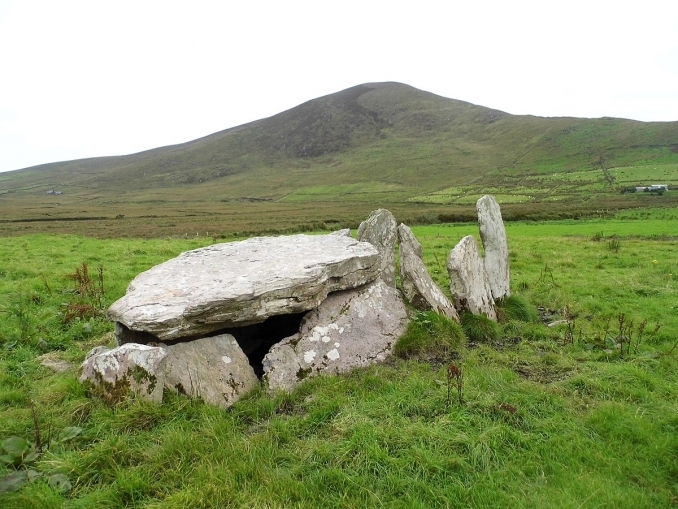Coom Wedge Tomb

Coom Wedge Tomb dates to the Neolithic period (4000–2500 BC) and is on the west of the Iveragh Peninsula in County Kerry, Ireland (Irish: Uíbh Ráthach, Contae Chiarraí, Éire). Wedge tombs are known as such due to their shape. This one is aligned west-east and is about 5 metres (16 ft) long and 1.5 metres (4 ft 11 in) wide. The chamber, the entrance to which is on the western side, is about 3 metres (9.8 ft) long, covered by a single slab. In front of this is an open antechamber which has three large stones on each side, the tallest about 1.5 metres (4 ft 11 in) high. The site is located off the R566 regional road, which runs south and west from the R567. The R567 is west from the N70 at Moing Yu Dhuda. The site is close to Kinnard West at Coom. The nearest village is Ballinskelligs (Irish: Baile an Sceilg).
The tomb is also known as Labbydermot (Dermot's Bed). This is linked to a story in Irish mythology: The Pursuit of Diarmuid and Gráinne (Irish: Tóraigheacht Dhiarmada agus Ghráinne) is told in the Fenian Cycle of Irish mythology. Coom Wedge Tomb was said to be a shelter that they built when being pursued by Fionn mac Cumhaill, who was a legendary hunter-warrior in Irish mythology, as well as featuring in the folklore of the other Gaelic countries of Scotland (Scottish Gaelic: Alba) and the Isle of Man (Manx: Mannin). There are also other monuments in Ireland attributed to the same story of Diarmuid and Gráinne.
Image: County Kerry, Coom Tomb. Courtesy of Wikimedia Commons. County Kerry - Coom Tomb - 20120103160021.jpg attributed author Jose Antonio Gutierrez D.
Celtic nation:
- Ireland
Itinerary:
- Ireland Munster west
Place type:
- Ancient site





